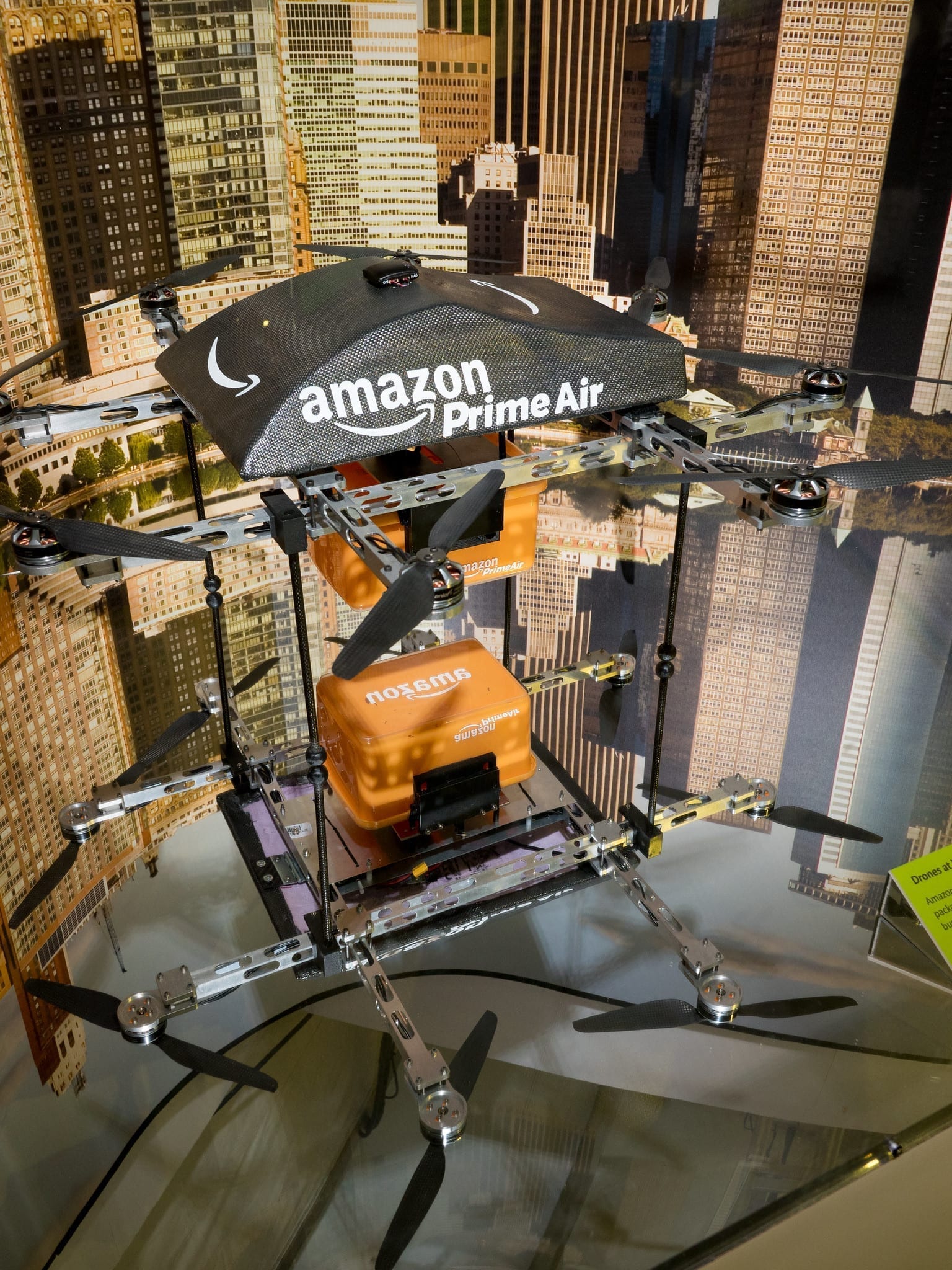Our website is not supported on this browser
The browser you are using (Internet Explorer) cannot display our content.
Please come back on a more recent browser to have the best experience possible

In March 2019, MIGSO-PCUBED participated in a networking session in Paris, with Alstom, to discuss the subject of Business Agility. Teams highlighted their individual’s journeys in adopting agile and key points in making the transition. The 12th state of Agile report shows “that agile adoption is growing within organizations, with 25% of the respondents saying that all or almost all of their teams are agile”. However, that highlights that the remaining majority of us – 75% of respondents – are still on the journey towards Agile adoption. And the industrial sector, having the most complexity, is still in the process of jumping on board the pure Agile train.
Agility first appeared in the industrial sector as products started to become more complex. But as the market itself became more complex, more disruptive, more digital; industrial organizations had no choice but to modify and hybridize their models. Here are 7 reasons why industrial organizations, and you, should look to adopt Agile methods.
1. To develop more complex products while hybridizing traditional and Agile methods
2. To accelerate the project’s development, thus reducing time to market, in a more collaborative way
3. To anticipate consumption changes and be more user-centric, as client’s needs and expectations grow rapidly
4. To respond to the technological disruption and take advantage of digital tools
5. To remain competitive against new entrants such as Amazon or Tesla, which are disrupting the market
6. To adapt easily the product features by developing modular systems
7. To steer employees’ mindset and lean on expertise less than processes
Agility first appeared in the industrial sector as products started to become more complex. Organizations developed a set of continuous, heavy and detailed processes. This provided them the ability to better manage and design their products with high quality, for a while. But as the market became more complex, more disruptive, more digital; industrial organizations had no choice but to modify and hybridize their models. Here are 7 reasons why industrial organizations, and you, should look to adopt Agile methods.
Developing software and writing lines of code can be tested and redesigned, faster and easier than developing an aircraft, for example. Industrial organizations are developing products that are increasingly complex, with highly advanced technology, requiring a significant amount of time in terms of design and output.
If traditional schemas are still necessary and relevant in developing industrial products (V cycle, product approval, safety certifications…), it’s even more important to combine these traditional development methods with Agile approaches to ensure the entire team is speaking the same development language.
Agile approaches enable industrial organizations to accelerate their project’s development, thus reducing time to market, in a more collaborative way.
Let’s look at the case of Airbus from MIGSO-PCUBED parent company The ALTEN Group. The Airbus Single Aisle aircraft family was popular within the market and as such encountered very high demand levels. In order to rethink the development of its Single Aisle program, Airbus turned to the use of Agile methods within their development teams.

To accelerate production while also ensuring the aircraft quality, Airbus pulled together teams from more than 170 people across the globe to using best practices from Agile. The company starting by digitizing their designs, initially drawn by hand on paper in the 1980’s. Airbus invested in 3D modeling to modernize their prototypes and created a digital twin of their aircraft, a crucial step in accelerating their development and production process.
Anticipating consumption changes, towards both products and services, is a pillar of Agile. The needs and expectations of clients or users grow rapidly, leading industrial organizations to focus more on improving user experience.
In the automobile industry, buyers as well as engineers, have been caught up in the push to autonomous vehicles. Customers are therefore more interested in semi-autonomous features like adaptive cruise control, lane departure warning, self parking, so they themselves become part of the journey. In contrast, with navigation readily available through your phone and connected to your car seamlessly, on-board navigation and entertainment systems are less in demand. Industrial organizations are focused on becoming more user-centric, steering their products and services development, ready to respond to rapid changes in direction.
To look at another example from the transportation industry, SystemX partnered with Alstom and SNCF in 2017, announcing the launch of the “Safe Autonomous Land Transport” project. This is a research project aimed at designing and automating the train of the future. Pascal Cléré, Senior Vice President of Alstom’s Digital Mobility division and President of SystemX, was quoted highlighting how: “Alstom is pursuing its digital transformation by gradually changing its portfolio of traditional solutions, but also by developing completely new solutions to address the emerging needs of operators and mobility users.”
If “To anticipate” is an Agile principle, then this approach enables an organization to go even further and to become a driver of innovation.
Ways to develop industrial products have multiplied, accelerated, facilitated and transformed with digital tools. New technologies now cover every organization’s function, from engineering to production. Digital tools enable employees to work without physical products. The development of simulation rooms, the use of 3D, the creation of digital factories (as we highlighted above); while upfront investment is required, the benefits are visible, project after project, product after product, long after the initial investment has been made.

In contrast, in the automobile industry, cars are still tested physically launched full speed against a wall, with requisite crash test dummies on board. It seems rather antiquated when considering self driving cars are on the road, not to mention a very long and expensive process. Nowadays, digital tools are capable to simulate these calculations and crash tests without any physical damages, physical costs, by digitizing the validation life cycle. However in order to capitalize on the savings, one must overcome the emotional aspect. At what point will we trust the data and digital models to give up physical testing? Even if not utilized 100% in testing, digital factories still allow organizations to increase their agility and speed up their sprint cycles.
Digital disruption is echoed by new market entrants as well. These new organizations or startups are disrupting the market, in every industry. From AirBnb, to Uber, to Tesla, many disruptors either did not exist a few years ago or experienced a rapid growth. In addition, many companies are making plays into adjacent markets, take for example, Amazon. Originally not part of the Aerospace or Transportation industry, with the creation of its drone, it is entering the industrial market. It has also just surpassed its biggest rivals in the logistics industry to become its own largest shipper.
One benefit for new entrants, is that they typically have less heavy and bureaucratic procedures than historical industrial organizations. Unlike other car manufacturers which encounter difficulties to launch an effective model, Tesla succeeded to build electric vehicle in a very short period of time. Nowadays, industrial organizations must be more Agile – more reactive, more flexible, more user-centric – to avoid being dominated by these new entrants.
Developing a product with a modular system has one main advantage: standardizing a certain number of things while limiting the costs. Modular development enables an organization to offer a wider variety of products and features on the market. It is no longer necessary to rebuild the entire architecture of a vehicle, but only make changes on affected modules, reducing complexity, and therefore resulting in fewer errors and more stability.

When French automotive manufacturer Groupe Renault was looking to adapt their product development process, they launched a program called FAST or Future-Ready At-Scale-Transformation. The FAST program set out to globally transform the group and massively digitize their environment; all by 2021. Thierry Bolloré, CEO of Groupe Renault, commented on the program: « With the FAST program, we’re making changes across the company to fully address the challenges of our industry and the mobility of the future».
The program has two main goals:
Within FAST program, Groupe Renault is using an Agile approach to develop connected service modules across all vehicle programs. This allows them to be more innovative and reactive with feature and functionality development, better anticipating the needs of the market and drastically improving the ease of updates.
Finally, unlike digital and technological tools, one last important aspect of Agile not sufficiently highlighted, is the human factor. Do organizations focus enough on the human aspect when they choose to deploy Agile methods?
Through the many (and heavy) processes implemented by more established organizations, employees who have become accustomed to the process landscape, tend to be less adverse in following the path already laid out. While this was done with good reason: processes bring stability; when it comes to being innovative and fast, industrial organizations may find themselves backed into a corner.
One of the primary issues to overcome in Agile adoption is therefore to give permission back to the teams to work differently. This requires them to lean more on expertise, less than processes.
Yes an organization can be ‘agile’ without using Agile tools. When an organization knows what to do and how to do it, then keeping to a more traditional organization can be relevant. It could even be counterproductive to change the organization of work, for fear of uncertainty. However most often, in times of high competition and when given the freedom to make things happen, organizations are more likely to be innovative, fast and flexible.
Agile methods must be tailored and adjusted to the context in which they take place. They may be used on one specific project, and, on the contrary, traditional methods could be used on another one. There is no one way.
This capacity to adapt to the context, to develop hybrid methods, to take advantage of new technologies, we believe will firmly lead an organization to work better and faster. But we cannot ignore the human aspect: the employees’ mindset, feedback, corporate culture, empowerment; all are indispensable factors to successfully adopting Agile for the long term.
While Agility is a topic that continues to be tested, as it progresses through its evolution, the way industrial organizations adopt Agility is open for discussion and does not have only one answer.
More on the same subject
Loved what you just read?
Let's stay in touch.
No spam, only great things to read in our newsletter.
We combine our expertise with a fine knowledge of the industry to deliver high-value project management services.
MIGSO-PCUBED is part of the ALTEN group.
Find us around the world
Australia – Canada – France – Germany – Italy – Mexico – The Netherlands – Portugal – Romania – South East Asia – Spain – Switzerland – United Kingdom – United States
© 2024 MIGSO-PCUBED. All rights reserved | Legal information | Privacy Policy | Cookie Settings | Intranet
Perfect jobs also result from great environments : the team, its culture and energy.
So tell us more about you : who you are, your project, your ambitions,
and let’s find your next step together.
Dear candidates, please note that you will only be contacted via email from the following domain: migso-pcubed.com. Please remain vigilant and ensure that you interact exclusively with our official websites. The MIGSO-PCUBED Team
Choose your language
Our website is not supported on this browser
The browser you are using (Internet Explorer) cannot display our content.
Please come back on a more recent browser to have the best experience possible
